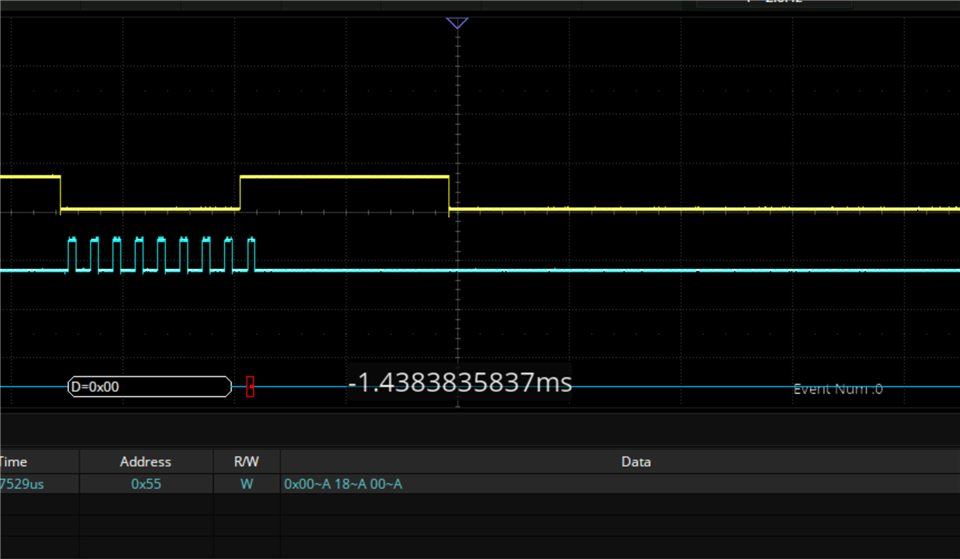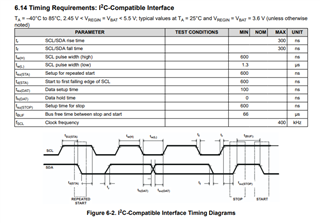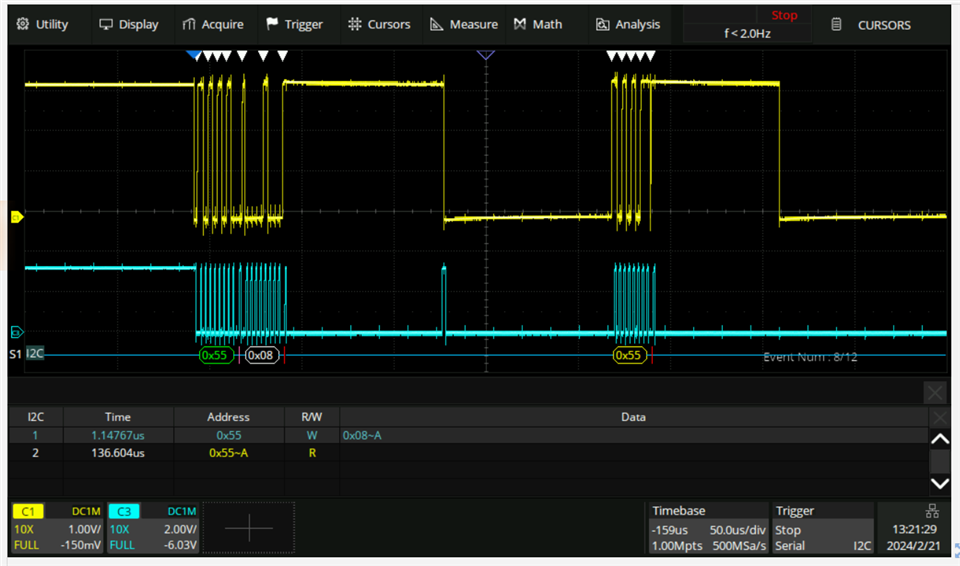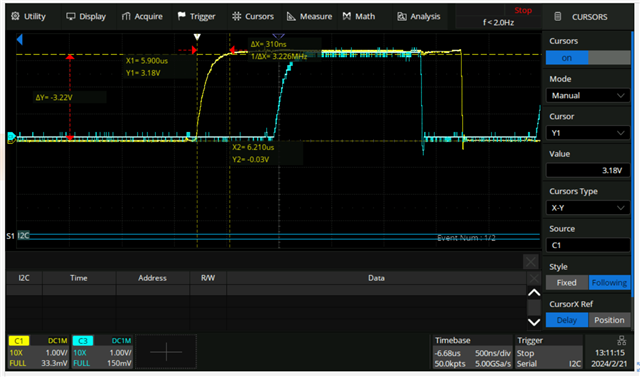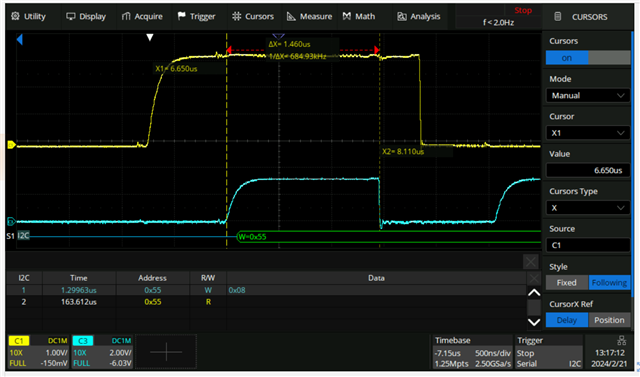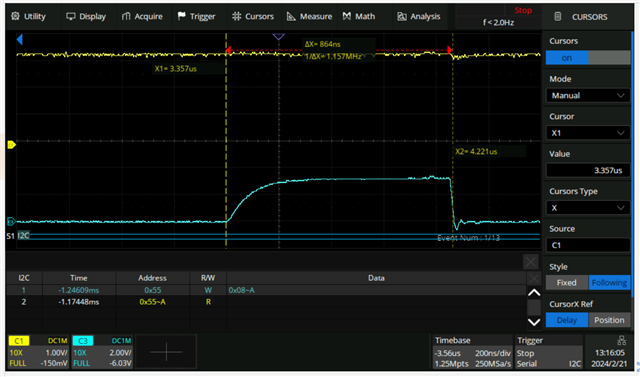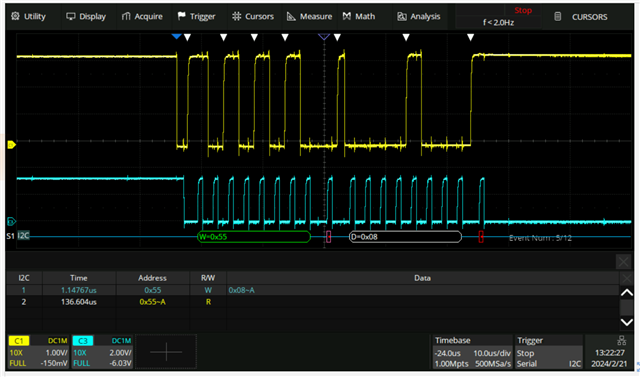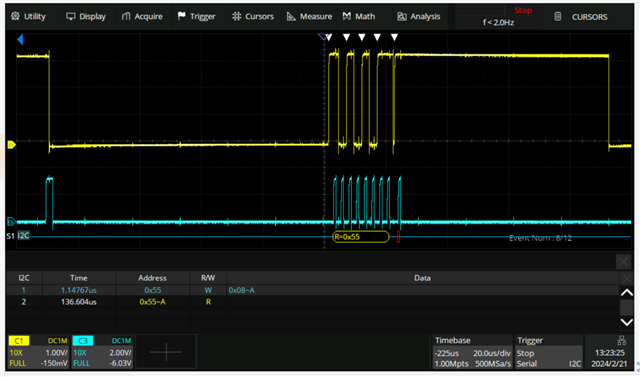Other Parts Discussed in Thread: BQ34Z100, BQ34Z100EVM, BQSTUDIO, EV2400
Hi,
I'm writing a driver for the BQ34Z100 chip, and every time I try to read or write to/from a register on the chip, it pulls low the SDA line on the I2C bus for about 1 second.
This happens after writing the 0x55 address on the bus, and the chip acknowledges.
After this, e.g. writing 0x08 to read out the voltage, the chip pulls down the SDA line for a long while, usually more than 1 second.
I have tried with several different registers, i2c frequencies and timings without any luck. We have not re-flashed the chip.
Any ideas on ways forward would be greatly appreciated?
What could make the chip behave this way?
Below are some screen shots from the oscilloscope.


